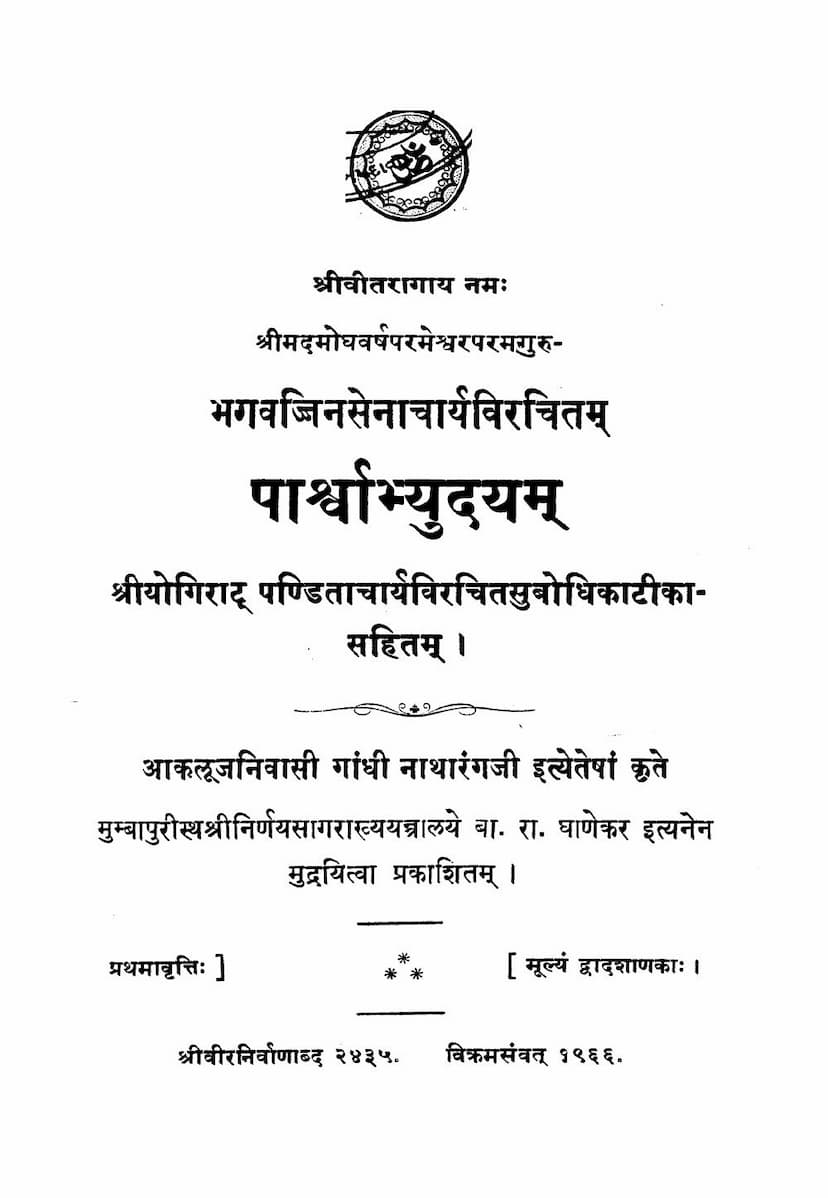Parshvabhyudayam
Added to library: September 2, 2025
Loading image...

Summary
This is a comprehensive summary of the Jain text "Parshvabhyudayam" by Jinsenacharya, with the commentary "Subodhika" by Yogirat Pandi tacharya, published by Nirnaysagar Press. The text is a Jain poem that interweaves the entire Meghaduta of Kalidasa, with each stanza of Parshvabhyudayam borrowing one or two lines from Meghaduta and the remaining lines composed by Jinsenacharya.
Key aspects of the text include:
- Author and Context: The poem was composed by Jinsenacharya during the reign of the Rashtrakuta king Amoghavarsha I, who ruled over Karnataka and Maharashtra. Amoghavarsha I was a patron of literature and composed the "Kavirajamarga" in old Kannada and a Sanskrit poem "Prashnottara Ratnamala."
- Interweaving with Meghaduta: The "Parshvabhyudayam" is a unique work where Jinsenacharya masterfully integrates verses from Kalidasa's "Meghaduta" into his own narrative. This technique, known as samasyapurana, involves completing stanzas where a portion is borrowed from another work.
- Narrative: The poem tells the story of Parshvanatha, the 23rd Tirthankara of Jainism. The narrative often draws parallels with events and characters from Kalidasa's Meghaduta, such as the themes of separation and longing. The story involves a past-life connection between Parshvanatha and his adversary, Kamatha, whose actions cause great suffering.
- Commentary (Subodhika): The commentary "Subodhika" by Yogirat Pandi tacharya provides detailed explanations of the verses, often referencing Jain scriptures and grammatical texts like Jainendra Vyakarana. The commentator is estimated to have lived after Saka 1321.
- Historical and Literary Significance: The introduction notes that the poem's commentary mentions Kalidasa as a contemporary of Jinasena, which is considered incorrect by scholars as Kalidasa is mentioned by the Jain poet Ravikirti in Saka 556. The work is significant for its literary merit, its unique integration of classical Sanskrit poetry with Jain narratives, and its historical insights into the patronage of arts and literature during the Rashtrakuta period.
- Themes: The poem explores themes of karma, righteousness, the consequences of actions, devotion, and the path to liberation, central to Jain philosophy. The narrative also touches upon the power of devotion and the eventual triumph of virtue over evil.
- Structure: The text is presented in Sanskrit, with each stanza followed by its commentary, explaining the meaning, grammar, and literary devices. The introduction and concluding remarks are in English and Sanskrit, respectively, providing historical and bibliographical details.
In essence, "Parshvabhyudayam" is a rich and complex Jain epic that showcases the literary brilliance of Jinsenacharya and his ability to synthesize classical Indian literature with the core tenets of Jainism, further illuminated by the detailed insights of the Subodhika commentary.